A PYE television, one of the first commercial televisions ever produced, is still operating after 65 years. TV collector Steve Farley, is still using the television, which has, in its lifetime, shown events such as Queen Elizabeth’s coronation, the moon landings and the assassination of JFK.
Cathode Ray Tube televisions (CRTs) like this, while bulky and heavier than modern flat screen LCD or plasmas, certainly had longevity that modern TVs do not.
The lifespan of a modern television is measured by its half-life, when the screen fades to half its potency and, therefore, needs replacing. Most consumer-grade screens used around the home have a half-life of about five years. For digital signage, things are a little different. While most digital signage applications use commercial-grade screens, which are designed to last longer than consumer-grade screen, the conditions in which they operate is more demanding.
The backlight of an LCD governs its half-life, and a commercial grade backlight usually lasts for about 60,000 hours. Because digital signage displays tend to run continuously, 24-hours-a-day, this means that most commercial-grade screens will need replacing after about six years; however, in outdoor locations, this length of time is greatly reduced.
To function outdoors, outdoor digital signage needs a high brightness screen. As the backlight of an LCD generates its brightness, this means a more powerful lighting system, which reduces the lifespan of the display. Furthermore, because outdoor environments have variable temperatures and conditions, this further reduces the lifespan of the LCD, requiring the screen to be replaced more often.
Outdoor digital signage displays are expensive commodities. Because of the waterproof and weatherization requirements, outdoor LCDs can cost five to ten times the price of indoor screens, making replacing the screens an expensive prospect.
By using protective outdoor enclosures, the cost of screen replacement is dramatically reduced. As they allow standard screens and the same protective enclosure can be reused time-and-time again with several generations of screen, the savings can be substantial, even when using high brightness screens. As screen replacement is an ongoing cost of running outdoor digital signage, over time, the cost of an LCD enclosure soon pays for itself.


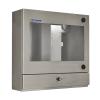

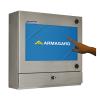

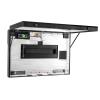
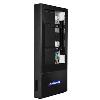
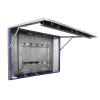
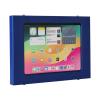
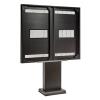
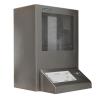






Comments are closed.